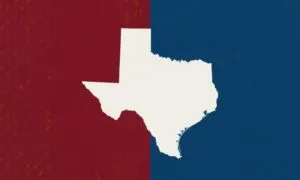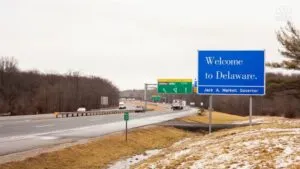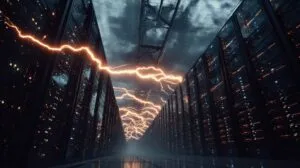Alaska, with its wild beauty and stunning landscapes, draws adventurers, nature lovers, and people seeking a slice of untouched wilderness. There’s something incredibly compelling about this vast state, but along with the breathtaking views come some serious dangers.
For those unfamiliar with Alaska’s reality, it might be surprising to learn that it’s one of the most dangerous places in the U.S. Extreme weather, unpredictability of wildlife, and surprisingly high crime rates are only a few reasons why Alaska is so dangerous.
I want to walk through some of the reasons why Alaska holds that reputation. It’s important to know the risks involved, especially for those who may be thinking of venturing out there or even making it home.
Table of Contents
ToggleCrime Rates

Now, here’s something that often surprises people—Alaska has a shockingly high crime rate. While you’d think that a place with so much open space would be calm and peaceful, that’s not the case.
Cities like Anchorage see violent crime rates well above the national average. A big part of this problem is linked to substance abuse, particularly alcohol and drugs. The long, dark winters are tough on mental health, and with limited access to mental health care, many people turn to substances to cope.
Alcohol, especially in remote areas, fuels domestic violence, sexual assaults, and other violent crimes. Sadly, Alaska is one of the deadliest states for women, with many crimes going unreported or unresolved, especially in Native communities.
Isolation plays a role here, too. In smaller, remote towns, law enforcement might not have the resources to respond quickly. It’s not like living in a city where a call to the police will have someone at your door in minutes. In Alaska, help might be hours or even days away.
Overall Crime Rate Increase
Alaska’s News Source reports that in 2024, Alaska’s overall crime rate has risen compared to previous years. While some crimes like rape have shown a decrease, the general crime landscape indicates an uptick, particularly in certain violent crimes.
Alaska’s Safest Cities
In contrast to the statewide trends, Alaska’s safest cities (cities such as Sitka, Unalaska, Ketchikan, Kodiak, etc.) report much lower crime rates.
The collective violent crime rate in these cities is around 2.0 per 1,000 people, which is half the national average (4.0 per 1,000 people), Safewise reports.
Property Crime Rates

LLC Budy emphasizes that property crimes make up the majority of Alaska’s overall crime statistics. Property crimes account for 79% of all reported crimes in the state. This includes offenses like theft, burglary, and vandalism.
Extreme Weather and Isolation

The cold is intense in Alaska, to put it lightly. Winters bring temperatures that drop well below freezing, and if you’re not ready for it, you’re in serious trouble.
Frostbite and hypothermia aren’t just possibilities; they’re genuine problems, especially if you underestimate how brutal the cold can be. Beyond just the biting temperatures, Alaska’s weather is incredibly unpredictable.
One minute, it might seem like a manageable winter day, and the next, you’re caught in a blizzard or a whiteout. Even if you’re an experienced hiker or outdoor enthusiast, getting disoriented in those conditions can be life-threatening.
This isn’t like taking a wrong turn on a hiking trail down in the lower 48; in Alaska, getting lost could mean days of being stranded with no help in sight. Isolation adds another layer to this danger.
Many communities are only reachable by plane or boat, and even then, travel might be impossible if the weather takes a turn. There’s an unnerving reality that you could be stuck for days, maybe even weeks before anyone can get to you.
Extreme Cold and Frostbite Risk
Denali Commission Statewide Threat Assessment shows that Alaska experiences some of the harshest winter conditions in the U.S., particularly in the interior and northern regions.
Temperatures can drop to -50°F or lower in winter, posing extreme risks to health, such as frostbite, hypothermia, and death due to exposure. Frostbite can occur within minutes at these temperatures, and without proper shelter, survival becomes challenging.
Health Risks from Extreme Weather Events
According to the CDC, extreme weather events in Alaska, such as major storms and heavy rain, have significantly impacted public health.
These events often lead to injuries, deaths, and property destruction, while also exacerbating the isolation of remote communities. Such isolation delays access to medical aid and emergency response, worsening health outcomes.
Wildlife

Alaska is home to some awe-inspiring animals, but that comes with risks. If you’ve ever thought about bears while camping, you know the anxiety that comes with hearing a twig snap in the distance.
But in Alaska, that anxiety is justified. Grizzly bears roam freely, and while most will steer clear of humans, accidents happen. Remember, this is not a zoo, and no one is safe.
Bear Encounters and Attacks
Bears, particularly brown and black bears, pose a significant threat to residents and visitors in Alaska. Bears emerge from hibernation in April, and encounters tend to increase during spring and summer.
The Alaska Department of Fish and Game advises people to be vigilant, especially about securing food and trash to avoid attracting bears. Aerial culling efforts have killed over 3,500 brown and black bears since 2008 as part of predator control measures.
Bears, particularly when food is involved, can be unpredictable. They’re not the only threat, either. Moose, although they look slow and docile, can be incredibly aggressive when they feel cornered or protective. People often forget how dangerous moose can be—until they’re charging at you.
Wolf Population Control and Dangers
@the_animals_us The Wolf is one of the most amazing creatures on the Planet #wolf #alaska #wolflover #animals #animallovers #wildlife #wildanimals ♬ Royalty – Egzod & Maestro Chives & Neoni
Wolves are another species subject to control measures in Alaska. According to Chilkat Valley News, since 2008, over 1,000 wolves have been killed in efforts to manage the population.
While direct attacks on humans are rare, wolves remain a potential danger, especially in more remote areas. Wolves can pose a threat to pets, livestock, and other wildlife, impacting the balance of the ecosystem.
Wildlife Diseases
As per USGS, diseases in wildlife are another increasing danger in Alaska.
Warmer ocean temperatures have led to the development of harmful algal blooms (HABs), which can release toxins dangerous to marine organisms and, in turn, to humans who consume contaminated seafood.
These environmental health threats are part of the broader impacts of climate change on Alaska’s wildlife.
Substance Abuse

As I mentioned, alcohol and drug abuse are significant problems. Alaska has one of the highest rates of substance abuse in the U.S., and it’s not just alcohol that’s an issue—opioid addiction is rampant as well.
The harsh climate, combined with the isolation and lack of healthcare resources, leaves many people without support systems. Remote villages are particularly affected by this. With little to no access to rehabilitation facilities, people in these communities often have no way out of their addiction.
It’s a vicious cycle that not only contributes to the crime rate but also leads to accidents, violence, and tragedies that could have been prevented with better infrastructure and resources.
Illicit Drug Use and Alcoholism
According to Royal Life Detox, Alaska ranks among the top 10 states with the highest rates of illicit drug use. Substance abuse, including alcoholism, remains a major concern across the state. Over 13.65% of Alaska’s population reports engaging in illicit drug use, significantly higher than the national average of 8.82%.
Outdoor Activities Gone Wrong

It’s no secret that Alaska is a paradise for outdoor enthusiasts. Whether you’re hiking, skiing, or fishing, the landscape offers incredible experiences—but with serious risks. The terrain is rugged, and even the most experienced adventurers can find themselves in dangerous situations.
Avalanches are a constant threat in the mountains, while icy waters pose risks for fishermen and boaters. The trails can be poorly marked, and without proper preparation, it’s easy to get lost. And when things go wrong in Alaska, they can go really wrong.
Rescue operations might not be feasible for days, and depending on where you are, survival can come down to your own wits and preparedness. The fact is, even seasoned hikers can find themselves in deadly situations.
Alaska’s wilderness doesn’t care how much experience you have—if you’re not ready for what it throws at you, the consequences can be fatal.
The Infamous Alaska Triangle

The Alaska Triangle is a mysterious region in Alaska known for its high rate of unexplained disappearances, often compared to the Bermuda Triangle. This area spans between the cities of Anchorage, Juneau, and Utqiagvik (formerly Barrow).
According to Business Standard, since the 1970s, over 20,000 people have gone missing in the region, including high-profile cases like the disappearance of U.S. House Majority Leader Hale Boggs and Alaska Congressman Nick Begich in 1972, when their plane vanished without a trace during a flight between Anchorage and Juneau.
There are several theories attempting to explain the numerous disappearances in the Alaska Triangle. Some are rooted in the region’s treacherous geography, which includes vast wilderness, dense forests, glaciers, and deep crevasses that can easily hide the wreckage of planes or hikers.
In addition to natural factors, there are paranormal explanations tied to the area. Native American legends speak of the Kushtaka, a shape-shifting creature that lures people deeper into the wilderness.
Other theories include UFO sightings, with one notable incident involving Japan Airlines Flight 1628 in 1986, when the crew reported unidentified aerial phenomena. Some even suggest that energy vortexes, which could disorient people and malfunction navigation instruments, might exist in the area.
The Alaska Triangle remains an enigma, drawing attention from both skeptics and believers in supernatural phenomena due to its high rate of disappearances and the variety of explanations that attempt to make sense of them.
Medical Help (Far and Few Between)
One of the scariest things about Alaska is how limited access to medical care can be. I’m talking about places where the nearest hospital is hundreds of miles away, and during the winter, getting there could be impossible for days.
If you’re injured or sick in one of these remote areas, that time can be the difference between life and death. Even in larger cities like Anchorage, the healthcare system can struggle to meet the needs of such a spread-out population.
With many communities only reachable by plane or boat, something as simple as a sprained ankle could turn into a much bigger issue if help can’t get to you.
How I Assessed the Dangers of Alaska
- I conducted thorough research, focusing on recent articles, reports, and statistics from credible sources about outdoor dangers in Alaska in 2024. I used various search engines to locate the most relevant and up-to-date information.
- I analyzed the data on incidents, wildlife encounters, and environmental risks, then synthesized the findings to highlight the most common and significant dangers outdoor enthusiasts face in Alaska.
The Hidden Risks in Alaska’s Beauty
Alaska is undeniably stunning. There’s no arguing that. But beneath that beauty lies a multitude of dangers.
The key to staying safe here is respect—for the land, the weather, and the challenges of living in such an isolated place. It’s easy to romanticize the idea of escaping to the wilds of Alaska, and for some, that adventure is worth the risk.
But it’s not a place to take lightly. Whether you’re visiting or planning to stay, being prepared and cautious isn’t just smart—it’s necessary. Alaska demands respect, and if you don’t give it, the consequences can be severe.
References
- Alaska News Source – Alaska’s general crime rate rises while rapes drop
- World Population Review – Crime Rate by State 2024
- SafeWise – Alaska’s Safest Cities of 2024
- LLC Buddy – Alaska Crime Statistics
- Denali – Identification of Threats from Erosion, Flooding, and Thawing Permafrost in Remote Alaska Communities
- CDC – Regional Health Effects – Alaska
- Alaska Department of Fish and Game – Alaska Fish & Wildlife News
- Chilkat Valley News – With Alaska’s wildlife numbers declining, agencies are blaming — and culling — predators. The true threat is much more complex
- USGS – Wildlife Disease and Environmental Health in Alaska
- Alaska Beacon – As Alaska overdose deaths mount, state leaders launch new education effort
- Royal Life Detox – Alaska: An Illicit Drug Use and Alcoholism Epidemic
- USA Today – Grand Canyon ranked as the ‘most dangerous’ park, but it’s not as alarming as you think
- Business Standard – Alaska Triangle: Over 20,000 people vanished from this mysterious place
- Washington Post – UFO Sighting Confirmed By FAA, Air Force Radar
Related Posts:
- 26 Most Dangerous Cities in US - Updated Statistics for 2025
- America's Murder Capitals: A 2025 Ranking of the…
- Safest Countries in the World in 2025 - GPI…
- 20 Best Zoos in the US Worth Visiting in 2025
- Most Dangerous Cities in Mexico 2025 - Top 10 Places…
- 11 Areas to Avoid in Atlanta 2025 - Crime Hotspots








